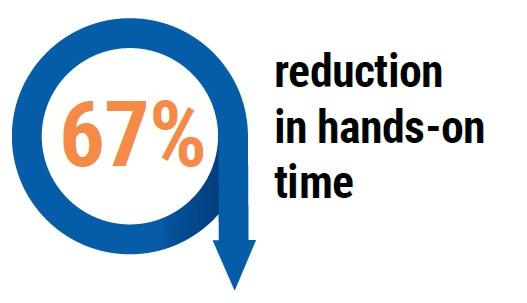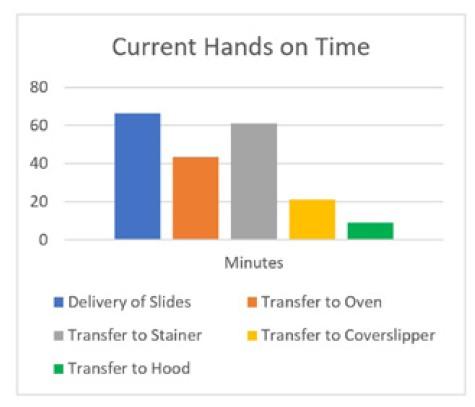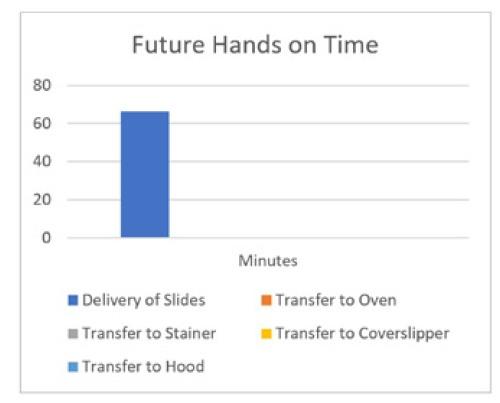
Increasing Routine Staining Productivity & Throughput Through Automation
The Leica Biosystems Process and Solutions Optimization team has partnered with a large province-based hospital to review the impact of automating their Routine Staining area. This hospital is most interested in the benefits they could realize in reducing their current hands-on intensive process and improving the throughput of their H&E staining.
During the Optimization Assessment, the Process and Solutions Optimization team observed the current processes involved in routine staining over several days. The team was able to benchmark the current processing time and number of steps involved.
It was observed that the staff is required to transfer the racks of slides through several steps in their process mainly due to the older instrumentation being used to perform routine staining. As a result, the workflow has been designed to transfer racks of slides to and from the oven, to and from the stainer, to and from the coverslipper, and to and from a vented hood for slide drying. Due to the high amount of hands-on time required, the lab only operates the routine staining for 10 hours each day.

Through Analyzing the data, the Process and Solutions Optimization team was able to show that by replacing the current Leica ST4040 Linear Staining System with detached coverslippers with two HistoCore SPECTRA Workstations, this academic medical facility could realize a 45.4% reduction in hands-on time. Further analysis showed that by modifying their current workflow, another 21.6% reduction could be achieved.

By combining integrated solutions and optimizing efficiencies, this facility could reach an overall 67% reduction of hands-on time for routine staining. Because of the reduction of hands-on time required, they could increase the hours of operation of routine staining to 16 hours each day, which is the total number of staffed hours for the laboratory. These changes would help increase the laboratory’s capacity and reduce their turn-around-time for delivering slides to their Pathologists.

Projections and Realized Results are specific to the institution where they were obtained and may not reflect the results achievable at other institutions.
Leica Biosystems content is subject to the Leica Biosystems website terms of use, available at: Legal Notice. The content, including webinars, training presentations and related materials is intended to provide general information regarding particular subjects of interest to health care professionals and is not intended to be, and should not be construed as, medical, regulatory or legal advice. The views and opinions expressed in any third-party content reflect the personal views and opinions of the speaker(s)/author(s) and do not necessarily represent or reflect the views or opinions of Leica Biosystems, its employees or agents. Any links contained in the content which provides access to third party resources or content is provided for convenience only.
For the use of any product, the applicable product documentation, including information guides, inserts and operation manuals should be consulted.
Copyright © 2024 Leica Biosystems division of Leica Microsystems, Inc. and its Leica Biosystems affiliates. All rights reserved. LEICA and the Leica Logo are registered trademarks of Leica Microsystems IR GmbH.